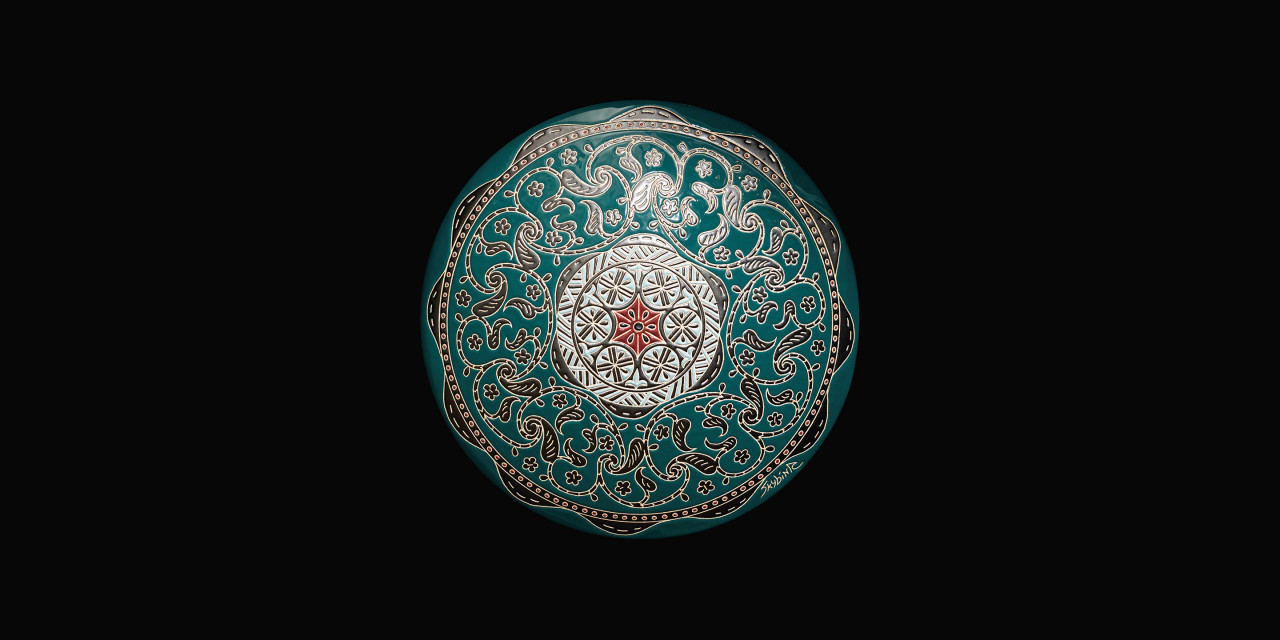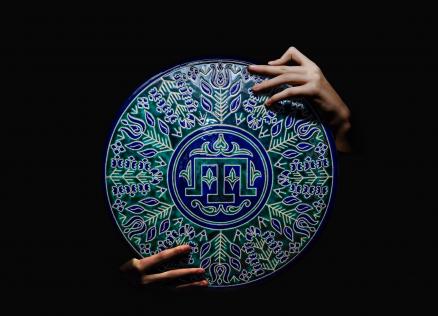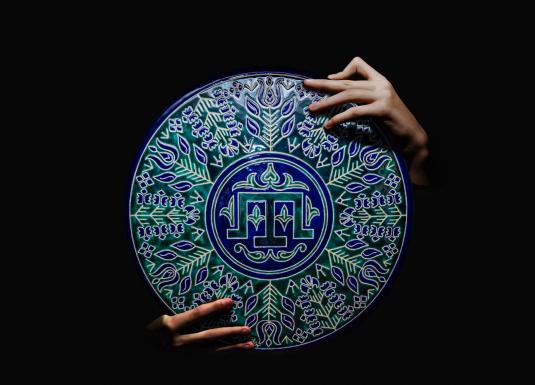Umbon (Köbek)

This shield is based on the ornaments of an 18th- and 19th-century helmet in the Metropolitan Museum of Art (USA). The surface of the helmet is decorated with rows of pressed ornaments and drop-shaped medallions with calligraphic inscriptions. One of the inscriptions indicates that the helmet belonged to a descendant of the Giray‘s dynasty. An important feature of the Crimean tradition is the presence of flowers with full petals and a void at the base. The floral ornaments symbolise the gardens of paradise. A special zoomorphic representation of ram's horns is a shape that adorned the helmets of many ancient peoples. In Crimean Tatar culture, the symbolically combined horns are a classic element of the ornamentation and architecture of the Khan period, associated with life force. The composition is decorated with blackening, which emphasises the thin lines of curved branches, almond and tulip elements. Compared to the widespread Caucasian and Ottoman tradition of blackening, this one stands out for its subtlety.
The six-sided light ring highlights the central part of the ceramic shield, the umbo (Latin: umbon – belly button), which bore the brunt of the battle. The green background colour was considered one of the noblest in Islam. It was particularly prized in the court of the Khan. The traditional elements of curved branches, ram's horn, almond and tulip shapes are composed in a black circle, echoing the technique of blackening the helmet.

